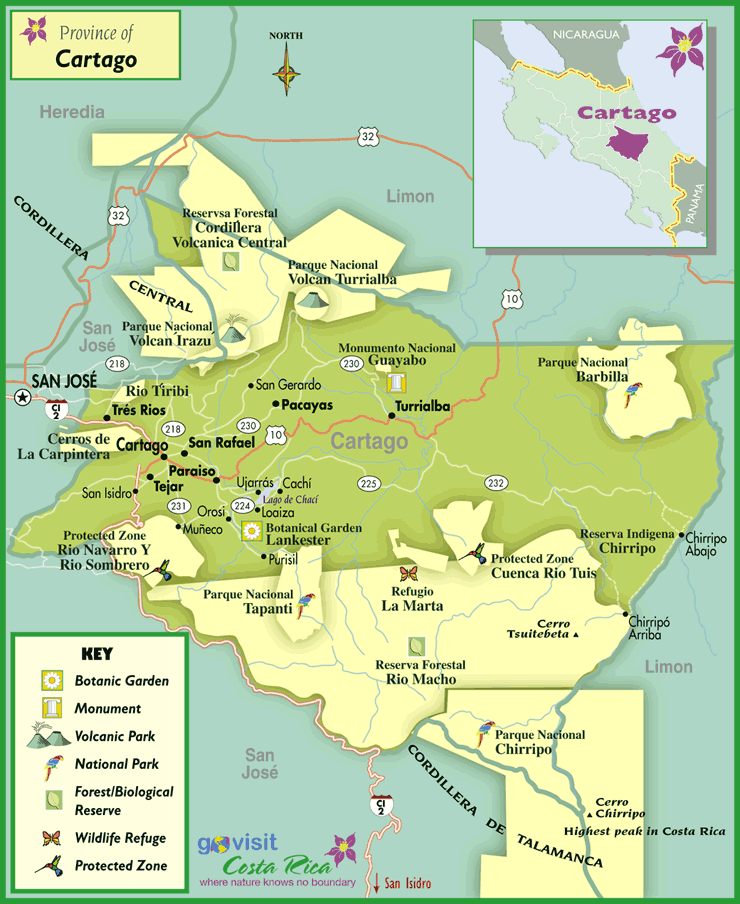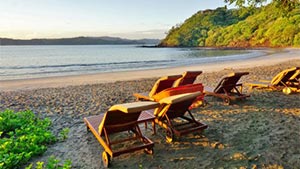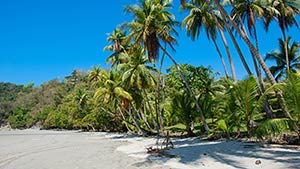Costa Rica is one of the most popular travel destinations in the world. It’s known for its beautiful beaches, gorgeous weather and stunning natural views. Cartago is a historic city that was once the capital of this Latin American country. After it was destroyed in the 18th century, the capital moved west to San Jose. The Irazú Volcano is responsible for much of the devastation of the original city, and the volcano is still active today. The last time the volcano awoke was in the 1960s.
Interest in Cartago as a tourist site has been rekindled, especially with many eco hotels in Cartago sprouting up to provide luxurious accommodations for visitors from around the world. There are many coffee plantations and sugar cane fields in the province, but the real draw for tourists are the Cartago National Parks and tropical rainforests that provide sanctuary for a rich and diverse biosphere.
National Parks to See in Cartago
Irazú Volcano National Park is probably one of the most visited parks in Costa Rica. You can view a beautiful volcano crater, and when the weather is clear, you can often see to both coasts. Irazú is often above the clouds and it is above the frost line. The park closes at 3:30 pm. You’ll want to make it to the park by noon to have the chance to explore. It is a strange combination of climate, because it can get very cold, but you also have to be concerned about sunburn because you are still close to the equator and the elevation adds to the intensity of the sun.
Orosi National Park, which is also referred to as Tapantí National Park covers over 12,000 acres which are mostly rainforest climates. There are over 400 species of birds that call the park home, 28 species of amphibians and reptiles, and 45 species of mammals. In addition, you’ll find hundreds of different orchids native to the country while you’re staying close by.
Chirripó National Park encompasses three different provinces with five different ecosystems. The park is one of the coldest places in Costa Rica, but it does tend to be dry from December to April. There is a concern about fire during the dry season, but the last major fire was in 1992. From May to November, the climate is much wetter. If you can get an eco hotel close to the park, it has some of the most beautiful landscapes in the area. Cerro Chirripó is the highest mountain in Costa Rica with an elevation of 3,820 mts.
Map of Cartago

The Braulio Carrillo National Park has some of the land in Cartago and it protects the area surrounding the Limón Highway, and includes many dormant volcanoes, three crater lakes and one active volcano. With the varied altitude, it, too, is home to a wide range of flora and fauna. Over 600 species of trees, 530 species of birds and 135 species of mammals have been recorded. The park is a great place for hiking and birdwatching and just for the stunning landscapes. Many of the eco hotels offer tours of the parks and biological reserves to allow visitors to catch the best of the area.
History, Shopping and Fun
Cartago may not be the cultural center of Costa Rica, but it is a very large city with pre-Columbian ruins, old churches, museums and landmarks for tourists to visit. The Basílica de Nuestra Señora de los Ángeles has a statue that is said to have healing powers and it draws thousands of pilgrims each year. Many of the ruins aren’t really ruins, just buildings that could not be finished due to damage by earthquakes, but the historical buildings are enlightening as to the culture of the past. Agriculture makes up most of the economy, but there are many commerce sections with fun and entertainment for everyone.
7 Days / 6 Nights
Starting at $978 per person
10 Days / 9 Nights
Starting at $1,440 per person











.jpg)



